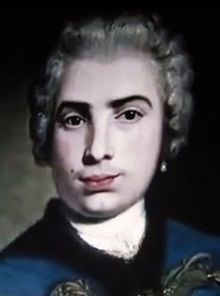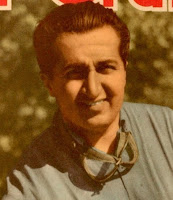Geminiano Giacomelli – composer
Farnese duke encouraged musician to develop his talent
One of the most popular composers of opera in the early 18th century in Italy, Geminiano Giacomelli was born on this day in 1692 at Colorno near Parma. From 1724, when his opera Ipermestra was first performed, up to his death in 1740, Giacomelli composed 19 operas. His best known work was Cesare in Egitto, Caesar in Egypt, which he produced in 1735. As a young child he had studied singing, counterpoint and the harpsichord with Giovanni Maria Capelli, organist and composer at the Farnese court and maestro di cappella at the cathedral in Parma. After moving to Piacenza, Giacomelli became maestro di cappella in the ducal parish of San Fermo. In 1719 he became maestro di cappella to the Farnese court and also at the Chiesa della Madonna della Steccata. Duke Francesco Farnese became Giacomelli’s protector and made him maestro di cappella for life at the church of San Giovanni in Piacenza, although he ultimately moved to the Basilica della Santa Casa in Loreto in Le Marche. Read more…
__________________________________________________________________
Caravaggio and a death in Campo Marzio
Hot-tempered artist killed man in Rome in row over a woman
The brilliant late Renaissance artist Caravaggio committed the murder that would cause him to spend the remainder of his life on the run on this day in 1606. Renowned for his fiery temperament and history of violent acts as well as for the extraordinary qualities of his paintings, Caravaggio is said to have killed Ranuccio Tomassoni, described in some history books as a ‘wealthy scoundrel’, in the Campo Marzio district of central Rome, not far from the Piazza Monte D'Oro. The incident led to Caravaggio being condemned to death by order of the incumbent pope, Paul V, and then fleeing the city, first to Naples, eventually landing in Malta. It was thought that the two had a row over a game of tennis and that the dispute escalated into a brawl, during which Caravaggio drew a sword and fatally wounded his rival. However, English art historian Andrew Graham-Dixon claims Caravaggio killed Tomassoni in a botched attempt to castrate him. Read more…
___________________________________________________________________
The Last Supper goes back on display
Leonardo’s masterpiece put on show again at last
After more than 20 years of careful restoration, the world famous wall painting by Leonardo da Vinci, The Last Supper, was put back on display for visitors on this day in 1999. The masterpiece, which shows the different expressions on the faces of the disciples at the moment Jesus says the words, ‘One of you will betray me’, was finally back where it belonged on the wall of the refectory of the Church of Santa Maria delle Grazie in Milan. Commissioned by Ludovico Sforza, Duke of Milan, Leonardo began work on The Last Supper (known as Il Cenacolo in Italian) in 1495 and he completed it four years later. But he used a new technique that was not as durable as traditional ones and as early as 1556 the painting was described by one commentator as ‘ruined’. Over subsequent years it suffered all kinds of damage and by 1978 only a small part of Leonardo’s original work remained. But a restoration project was mounted to reverse the damage and the refectory was sealed and converted to provide a climate-controlled environment for the painting. Read more...
_____________________________________________________________________
Leandro Jayarajah - cricketer
Father was a pioneer of game in Italy
Leandro Jayarajah, captain and head coach of Roma Capannelle Cricket Club, was born on this day in 1987 in Rome. His father, Francis Alphonsus Jayarajah, usually known as Alfonso, is a Sri Lankan national who founded what became the Capannelle club in 1978 and was one of the pioneers of organised cricket in Italy. Alfonso was co-founder in 1980 of the Federazione Cricket Italiana, under whose auspices an Italian cricket championship has been played since 1983. Capannelle, which takes its name from the racecourse in Rome, the Ippodromo Capannelle, where the club plays its home matches, have been Serie A champions on five occasions, most recently under Leandro’s leadership in 2013. The club began life as the Commonwealth Wandering Giants Cricket Club, changing its name when the chance to use the green space in the middle of the racecourse as a permanent home presented itself in 1983. Leandro, a right-handed batsman who bowls off spin and occasionally keeps wicket has followed his father into international cricket as a member of the Italy team. He has also played club cricket in England and Australia. Read more...
Home













